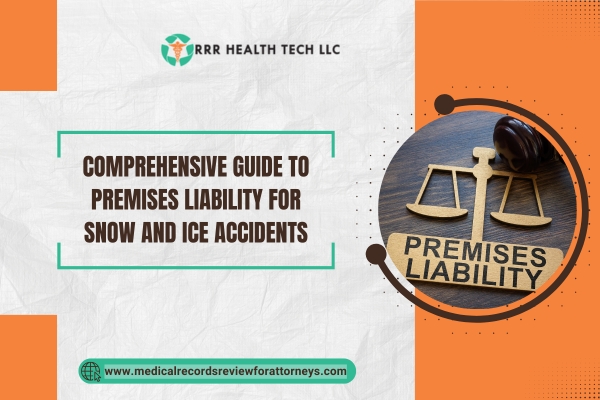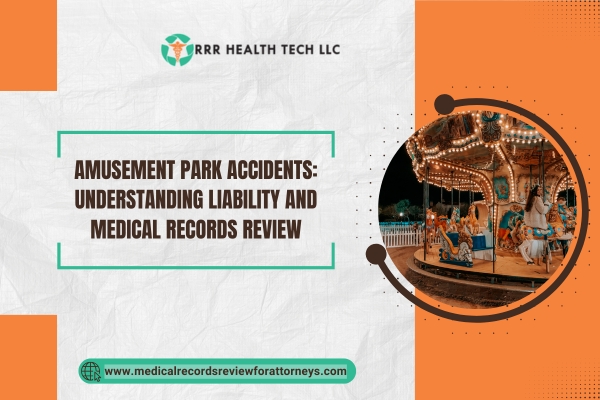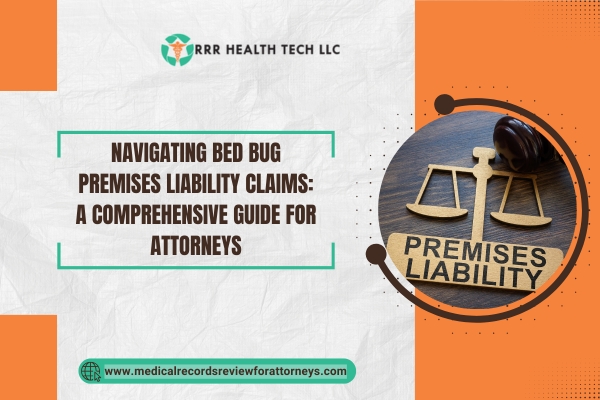
Introduction
Liability Cases cover a vast section of law which includes the owner of a site being responsible for injuries that arise from the state of their premises such as snow and ice. The slip and fall accidents are increasing as winter nears leading to the need for numerous legal claims. This article dig out the details of premises liability with regards to snow and ice and how medical records examination services assist lawyers in these issues.
Understanding Premises Liability
What is Premises Liability?
A combination of snow and ice can be harmful for people on lower ground, as they can dangerously fall off the surface. When this happens damage caused to the individuals is the responsibility of the site or property owner needs to cater for. Such legal terms are very important to make certain that the property possessor takes all measures to offer a safe environment for the visitors, people who are invited, and even those who may be illegal in some circumstances.
Legal Framework
As with all legal principals, premises liability begins with negligence. To lay down a claim, the other party must prove that the property possessor is in breach of their duty of care. This responsibility means that the property owner has to undertake all reasonable attempts to mitigate risks, particularly in the case of winter months when the snow and ice problems can be dangerous.
Snow and Ice Accidents: Key Considerations
Common Causes of Slip-and-Fall Accidents
Snow and ice can lead to various hazardous conditions, including:
• Walkways Covered In Snow: Cleaning snow off walkways, while necessary, poses the danger of making masquerading slippery surfaces.
• Icy Parking Lot: Icy parking lots are dangerous and can lead to serious harm if not correctly managed.
• Lack of Warning/Informational Sign: Failure or ignorance to place caution or informative signs can leave people exposed to severe injuries.
Legal Standards for Liability
In determining liability for snow and ice-related accidents, several legal standards come into play:
- Reasonable Timeframe for Removal: Property owners are expected to clear snow and ice within a reasonable period after a storm. Failure to do so can result in liability for any resulting injuries.
- Natural vs. Artificial Accumulation: Courts often differentiate between snow that accumulates naturally and snow that is artificially created, such as from snow removal operations. This distinction can significantly impact liability determinations.
Current Trends and Statistics (2024)
Studies predict an increase in slip and fall injuries in winter. An estimated 1 million people sustain injuries every year from falls on icy and snowy surfaces. Aside from this, changes in weather conditions resulting from climate change have led to harsher and more frequent winter storms. Noticing these changes is helpful when considering premises liability litigation as they can have an effect on the case outcomes and litigation strategies.
The Role of Medical Records Review
Medical records review services play a vital role in premises liability cases. Attorneys can leverage these services to:
• Determine the nature and extent of the injuries: The detailed medical records from physicians provide critical evidence of the individual’s injury, which should be essential in order to execute a case.
• Causation: The examination of instruments will assist in proving that the injuries indeed resulted from the slip and fall accident and no other events.
• Prove the Claim: Medical documents are often needed to back up claims for money under the law, such as reimbursement for medical services, time not worked, or suffering.
Case Studies
Case Study 1: Winter Wonderland Mall Incident
Overview: Following a snowstorm, a shopper slipped while getting out of her car at the mall parking lot. The parking lot had not been ploughed.
Challenges: The property owner claimed that they had done their parts in observing safety by stating that the snow was only packed shortly before the incident happened.
Solutions: Review of the medical records showed the injuries of the shopper and the fact that his wrist was broken and needed surgery. That was very helpful in proving how bad the incident was.
Case Study 2: Residential Slip and fall
Overview: A member of the rent paying public slipped on ice in an apartment complex which was not being looked after properly and where there had been a heavy snowfall.
Challenges: The landlord stated that the tenant was at fault to some extent because he should have been more careful when he was walking.
Solutions: The medical records supplied showed that, in fact, there was a prior disability but the fall was making it worse which is what helped prove the landlord’s negligence in not providing safety.
Conclusion
Knowing and understanding the premises liability as it pertains to accidents involving snow and ice is important both to the property holder as well as victims. By employing the services of medical record review, lawyers are able to better show the negligence of their clients and greatly aid in settling claims for damages. With winter edging nearer, lawyers should prepare themselves with the ever changing scope of snow and ice premises liability, and the tools to win their cases.


